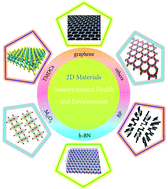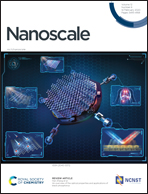Recent advances in two-dimensional-material-based sensing technology toward health and environmental monitoring applications
Abstract
Monitoring harmful and toxic chemicals, gases, microorganisms, and radiation has been a challenge to the scientific community for the betterment of human health and environment. Two-dimensional (2D)-material-based sensors are highly efficient and compatible with modern fabrication technology, which yield data that can be proficiently used for health and environmental monitoring. Graphene and its oxides, black phosphorus (BP), transition metal dichalcogenides (TMDCs), metal oxides, and other 2D nanomaterials have demonstrated properties that have been alluring for the manufacture of highly sensitive sensors due to their unique material properties arising from their inherent structures. This review summarizes the properties of 2D nanomaterials that can provide a platform to develop high-performance sensors. In this review, we have also discussed the advances made in the field of infrared photodetectors and electrochemical sensors and how the structural properties of 2D nanomaterials affect sensitivity and performance. Further, this review highlights 2D-nanomaterial-based electrochemical sensors that can be used to check for contaminations from heavy metals, organic/inorganic compounds, poisonous gases, pesticides, bacteria, antibiotics, etc., in water or air, which are severe risks to human wellbeing as well as the environment. Moreover, the limitations, future prospects, and challenges for the development of sensors based on 2D materials are also discussed for future advancements.

- This article is part of the themed collections: Editor’s Choice: Functional MOFs and COFs, Nanoscale 2021 Lunar New Year Collection, Recent Review Articles and Nanoscale Most Popular 2020 Articles


 Please wait while we load your content...
Please wait while we load your content...